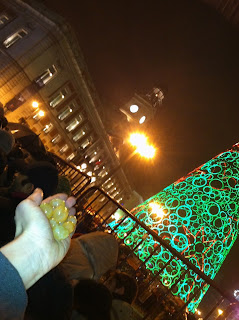July 20, 2009 - Gyeongju, South Korea
 Jade Green stream, don't boast so proud
Jade Green stream, don't boast so proudOf your easy passing through these blue hills.
Once you have reached the broad sea
to return again will be hard.
While the Bright Moon fills these empty hills,
why not pause? Then go on, if you will.
~Hwang Chin-i (Korean poet)
More specifically, my interest in Korea is it's role in Asia's Silk Road Trade during the Silla Dynasty, having the greatest impact from 57 B.C. - 935 A.D. Gyeongju was the capitol of the Silla Kingdom for more than 1,000 years. Today the region is referred to by locals as "museum without walls," due to the large collection of historic buildings, temples, tombs, artifacts, and burial mounts.
On the outskirt of the region is Gwareung and the Royal Tomb of Silla. The tomb houses King Wongseong, the 38th King of Silla. But more important are two carved statues guarding the tomb. Facial features include broad noses, large eyes, beards, with haircuts and swords indicative of Middle Eastern tribes - linking Korea to the Persian World due to Silk Road Trade.

Before leaving the south, a tour of the world's largest shipyard and shipbuilding producer only makes sense. Hyundai Heavy Industries is mostly recognized for automobiles in the U.S., however, the global Korean business divides success between ship
 building, construction equipment, electric systems, offshore ventures, machinery, among other engineering endeavors. Chung Ju-yung, the 1946 founder of Hyundai services, was originally from a North Korean village where some of his family remains today. Before his death in 2001, Chung was a major financial contributor towards reuniting North and South Korea with the construction of railroads and station stops, fostering diplomatic visits. Thus far, little has come of his generosity and commitment to family.
building, construction equipment, electric systems, offshore ventures, machinery, among other engineering endeavors. Chung Ju-yung, the 1946 founder of Hyundai services, was originally from a North Korean village where some of his family remains today. Before his death in 2001, Chung was a major financial contributor towards reuniting North and South Korea with the construction of railroads and station stops, fostering diplomatic visits. Thus far, little has come of his generosity and commitment to family.

